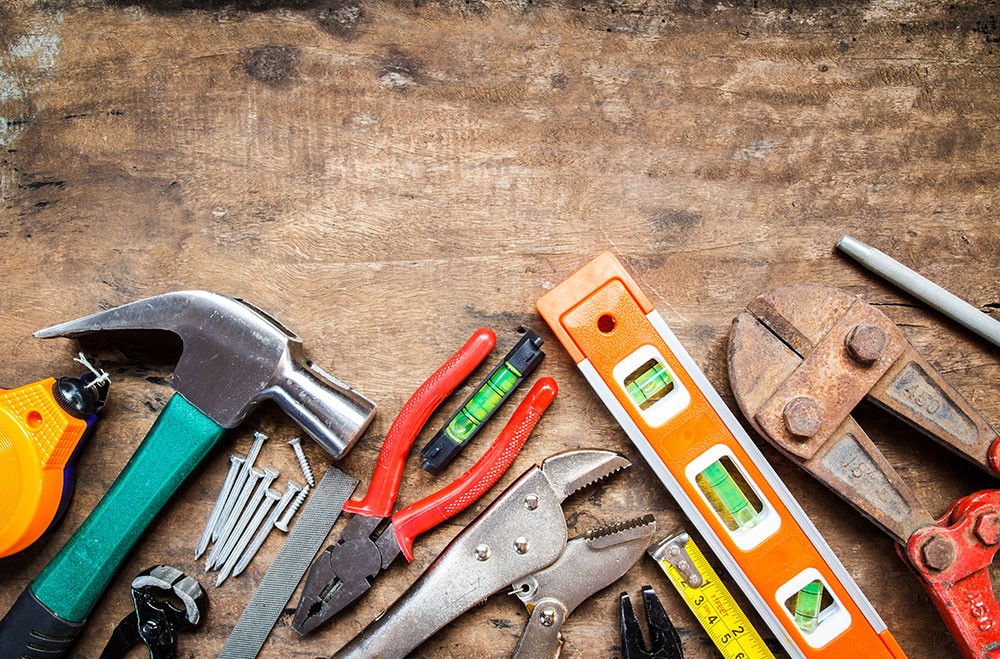A handyman may be summoned by a client to solve a wide variety of problems. From fixing the plumbing to dealing with the failure of an electrical appliance to something else entirely – a handyman’s tasks can be diverse.
That’s why a handyman can’t rely on 2 – 3 tools. He must have at least ten essential tools for him to remain adaptive across different work environments.
If you’re thinking of setting up your very own handyman business, read on to know what those tools are and why they should be a part of your toolbox. Also, before you start your handyman business venture, consider the benefits of a public liability insurance policy.
Visit this website to know more.
Tape Measure
The good old tape measure is still as important as ever, and no handyman can ever hope to do his job without one. No matter what kind of work you’re called for, a tape measure will always come in handy in terms of knowing the right measurements and providing accurate solutions.
A Set of Screwdrivers
If you need to unscrew something, there’s nothing you’d need more than a screwdriver. However, as the shapes and sizes of screws used in different things vary, what you ideally need is a set of screwdrivers. You’ll find screwdriver sets from reputed companies that include both common and uncommon head sizes so that you can unscrew anything you need to with confidence.
Hammer
A handyman without a hammer is like a tiger without teeth and claws. While certain hammer applications can be executed with other tools, many others cannot. For instance, if nails get severely bent, you can only try and use a substitute for the curved claw, which is typically featured in every modern-day hammer. There are several new-age hammers that come with fiberglass handles as well, which are almost unbreakable.
Cordless electric drill
Cordless electric drills are not as heavy as corded power grills, and they ensure that work environments remain less cluttered by wires. However, when choosing one, we recommend you stick to a fine balance between power and portability. Ideally, a 12-volt drill would be perfect for kicking things off as it can handle most jobs that are typically encountered across modern households.
Vice grip pliers
Pliers can be used across a variety of applications. While there are different types of pliers you can pick from, and we recommend using vice grip pliers. Unlike some other plier types, vice grip pliers feature one-handed release mechanisms, which make them incredibly easy to use even for novices.
Crescent wrench
The biggest difference between a crescent wrench and a regular wrench is the fact that crescent wrenches can be adjusted to fit any material or pipe you have to work with. Before crescent wrenches, handymen had to carry several wrenches of different sizes. However, now that the technology has evolved, it’s time for you to become a new-age handyman as well.
Rechargeable work light
Handymen are often needed by their clients to crawl into small spaces where there’s barely any lighting at all. To make sure that you can do your work properly in such a situation, you need a rechargeable multi-LED work light. There are numerous options out there, with many variants delivering at least 8 hours of bright LED light per charge.
Handsaw
While a manual handsaw won’t offer as much power as a power saw, it will certainly work for household tasks. The advantage with the manual version is that it’s very easy to set up and isn’t as intimidating as a power saw. As someone who’s just starting out, it’s better to work with the simpler version of a complex tool before moving on to the complex version.
Utility Knife
From marking mortises to shaving wood to opening boxes – a utility knife can come in handy in an array of situations. These days, the utility knife options in the market are endless. However, ideally, you should go for one that comes with built-in blade storage and a rubber handle.
Level
When it comes to applying the finishing touch to any task that has something to do with straight lines, a level can make the difference. For example, if the picture you just hung on the wall doesn’t appear straight after you step back a bit, a level can help you set the picture straight.
So, now that you know all the tools you need to get started with your handyman business, we hope you buy the right tools and wish you the very best. We’d also recommend you consider investing in public liability insurance before you start operating your handyman business. You can count on it to come in handy if you ever accidentally damage people and/or their property when providing your services.







